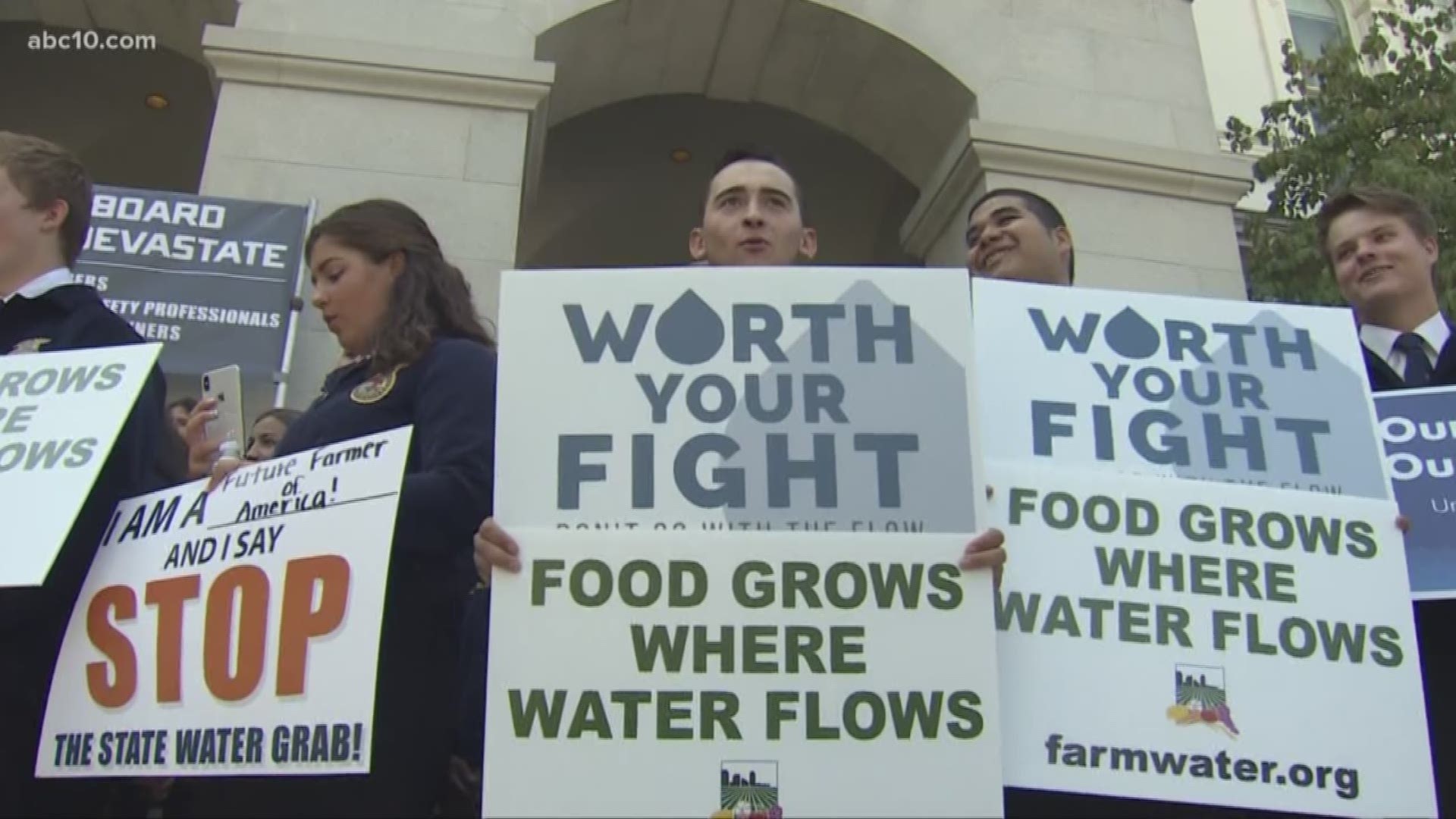If you are viewing on the ABC10 app, tap here for multimedia.
Conversations are circling about water policy in California, after a memorandum from President Donald Trump addressing western water issues.
What does the memorandum have to do with California?
The memorandum addresses timelines for environmental reviews, improvements water reliability, and reductions in regulatory burdens.
In a press conference, David Bernhardt, Deputy Secretary of the Department of Interior, said that the memorandum “might be the most significant action taken by a President on western water issues" in his lifetime.
In California, the memorandum is expected to expedite biological opinions for the Central Valley Project and California State Water Project. It would also expedite regulatory processes that could benefit farmers impacted by drought and regulation and will have agencies use the "best available" scientific and commercial data.
In regard to the controversial river flow proposal in California, Bernhardt said that he could not speak for whether the President would get involved with the proposal, but he did express the view of the department.
“Our view always is to find ways to work with states, protect our interests, and work with them collaboratively on theirs.” Bernhardt hopes that they’ll find a way to work through the process in a way that works for everyone.
What is the river flow proposal?
One of the key topics of concern for any farmer in Stanislaus, San Joaquin, or Merced County is the river flow proposal, often derided as the “State Water Grab.”
Authorities with the State Water Board consider the Bay Delta to be in ecological crisis and using river flow measures that have not benefited fish and wildlife. The plan's last major update was in 1995.
In order to address the ecological crisis, the State Water Resources Control Board plans to update the river flow requirements for the benefit of fish and wildlife and the environment. This would be seen with an increase in unimpaired flows from the Stanislaus, Merced, and Tuolumne River, all of which feed into the San Joaquin River and head to the Bay Delta. The state expects this to increase the amount of Chinook Salmon, a species of concern, and Steelhead Trout, a protected species, in the river.
The State Water Board has said that as little as 10 percent of flows in the San Joaquin River actually go toward fish and wildlife. One of the concerns the State Water Board had is the change in water temperature from lack of flows; they say that the additional flows would help make the water less lethal for fish.
The issue for many communities is the amount of flows being sought, a range of 30 to 50 percent unimpaired flow from the three tributary rivers. Communities have criticized that the state’s plan to resolve an ecological crisis could give them an economic crisis.
Does the memo deal with the State Water Grab?
The memo addresses hydroelectric re-licensing, with which water agencies, like Modesto Irrigation District and Turlock Irrigation District, are currently experiencing. The memo also requires agencies to consider local plans, like the Tuolumne River Management Plan.
The Tuolumne River Management Plan was a response from TID and MID to the river flow proposal; the districts have criticized the state plan for being too focused on unimpaired flows.
“More water for water’s sake won’t solve the predation issue. And until predation is solved, substantial improvement in the number of fish leaving the system is unlikely,” TID spokesman Calvin Curtin told ABC10 in August. “Our plan is based on Tuolumne specific studies done as result of our re-licensing efforts.”
Among the arguments against the river flow proposal is that the science done by the state does not hold up and fails to achieve any goals.
“Our communities are looking at significant impacts with no evidence that additional water will get where it needs to go or achieve any goals or objectives identified by the state. We will be forced by state regulators to solve larger statewide problems that we didn’t create,” Modesto Irrigation District Public Affairs Specialist Samantha Wookey told ABC10 in August.

